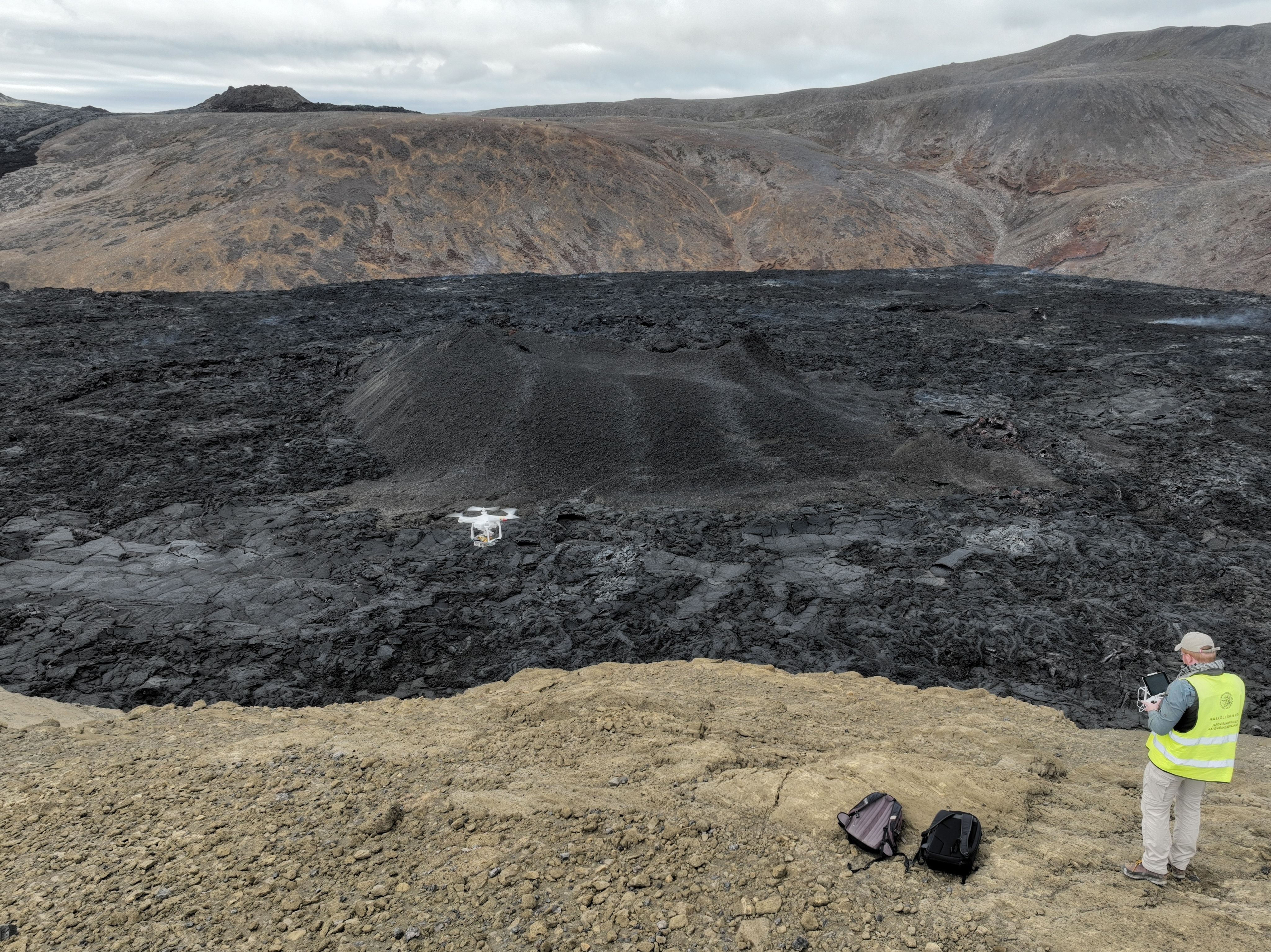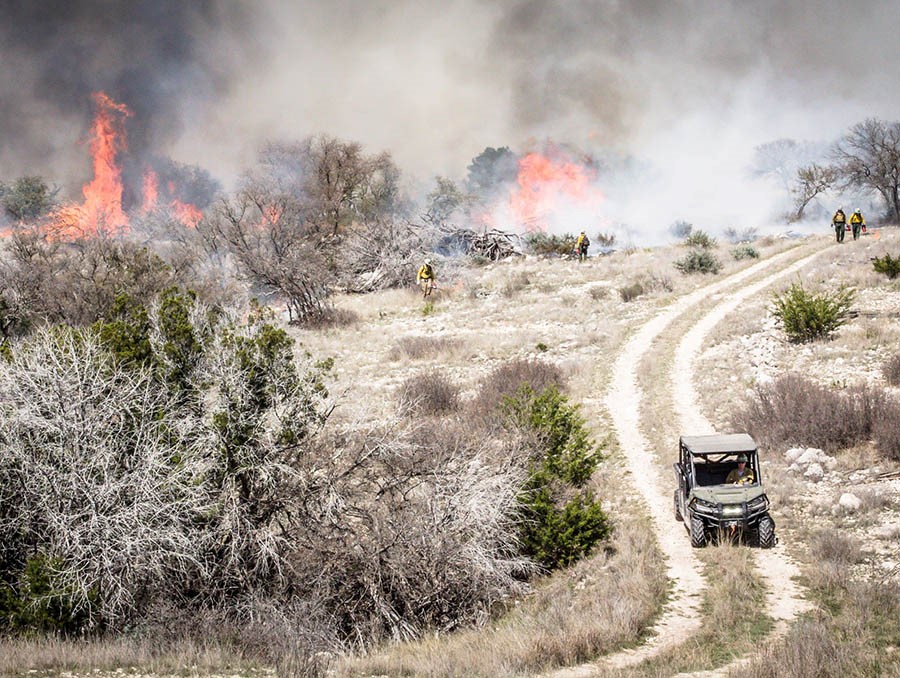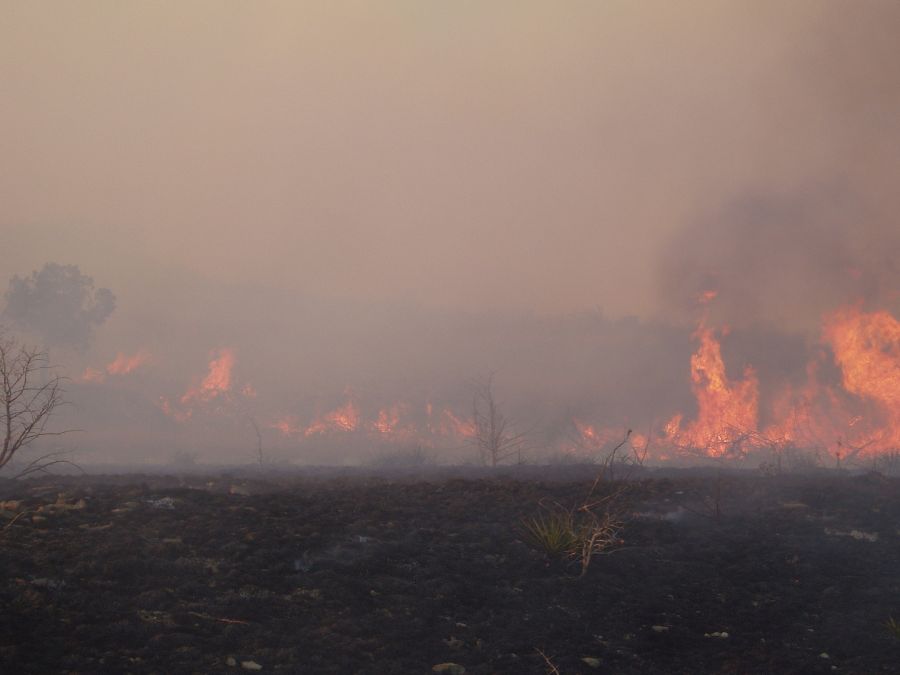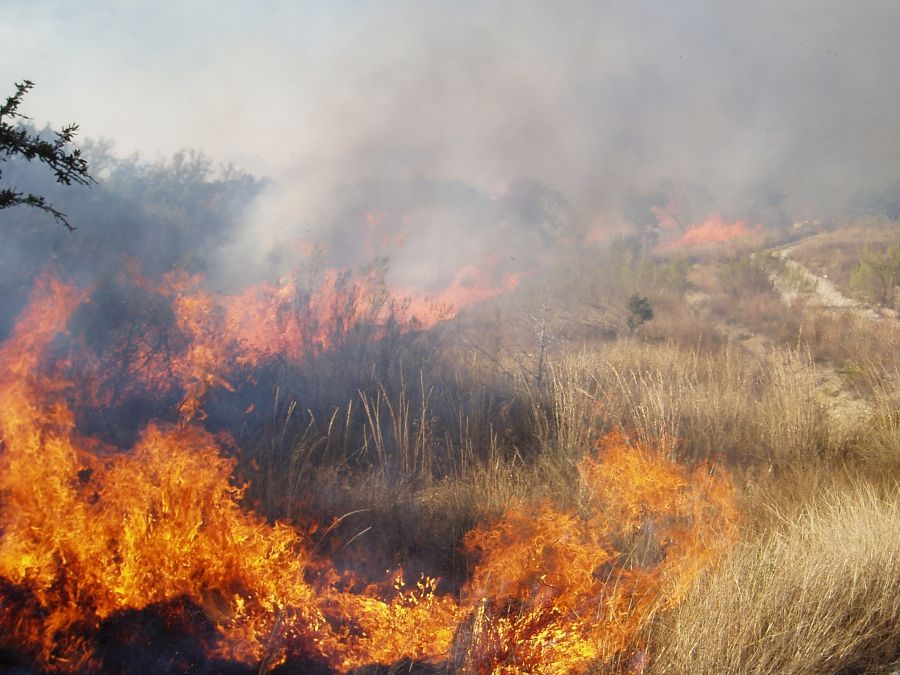
Dr. Thompson flying drone at crater.
Wildfires are on the rise and, when fires get out of control, can result in the loss of life and damages costing billions of dollars. Wildfire frequency is increasing in the United States, but innovation and technology development can provide tools to better face these challenges.
Dr. James Thompson, from the Bureau’s State of Texas Advanced Resource Recovery (STARR) program, was recently awarded a $1.3 million grant by NASA to develop technology to address the active-fire stage of wildfire management. The project will advance the spatiotemporal resolution and latency of novel multispectral thermal infrared (TIR) data acquired from a small unmanned aircraft system (UAS), increasing the accuracy of the detection and characterization of burn stages. The idea is to develop an affordable UAS-based, high-temperature, multispectral TIR imaging system with high spatial (meter-scale) and temporal (second) resolution. Dr. Thompson has already developed a prototype that was tested over active volcanoes.
The project also involves the U.S. Fish & Wildlife Service and the Balcones Canyonlands National Wildlife Refuge in Texas. The system will be deployed during prescribed burns in the preserve for testing, with the intention to develop capabilities that ultimately will be used during real wildfires. For more information, see the project summary: https://esto.nasa.gov/firesense2022final/#thompson


